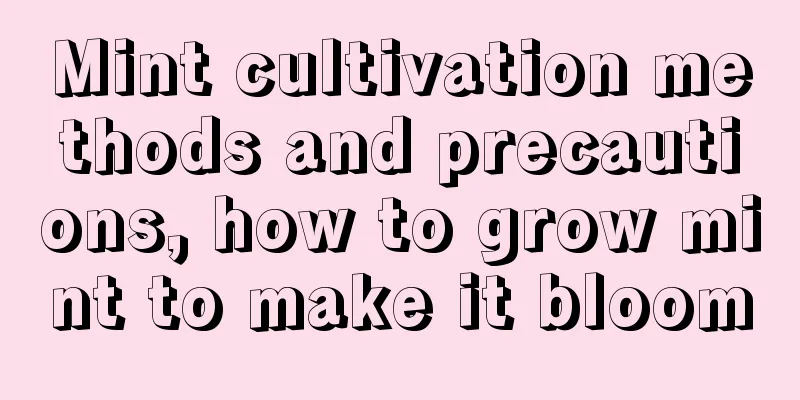Mint cultivation methods and precautions, how to grow mint to make it bloom

1. Adequate sunlightMint is a long-day crop. If there is insufficient light, it will not only affect its development, but also reduce the content of menthol and peppermint oil. Generally, it should be placed in a sunny place and the light time should be as long as possible every day. This is conducive to the differentiation of flower buds and better photosynthesis. It should be noted that the seedlings should be avoided from strong sunlight, otherwise they will be burned. It will be fine when they grow a little bigger. 2. Suitable soilMint does not have very high requirements for soil. Generally, as long as the soil is not severely desertified or too sticky, it will be fine. At the same time, it is also necessary to avoid using a substrate with too strong acidity or alkalinity to plant it. You can mix garden soil, humus soil and sandy soil. The sand content should not be too high so as not to affect the growth of the roots. The soil must be thoroughly disinfected before use. It can be exposed to the sun or stir-fried in a waste pot. 3. Water appropriatelyIn order to promote the growth of mint, sufficient water should be provided in the early and middle stages. Generally, it needs to be watered once every 15 days, so that it can grow quickly. When it grows to a certain size, the amount of water should be properly controlled. By controlling the water, you can prevent it from growing too fast and reduce the possibility of lodging. Generally, you only need to water the seeds 4-5 times after germination before harvesting, and stop watering 25 days before harvesting. 4. Pay attention to fertilizationWhen planting mint, you need to apply enough base fertilizer. Base fertilizer generally consists of decomposed compost, superphosphate and bone meal, which can ensure comprehensive nutrition and is not easy to cause fertilizer damage. When the seedlings grow to 10-15 cm in height, they need appropriate topdressing. At this time, urea is mostly used as fertilizer to promote the development of branches and leaves. Fertilizer needs to be fully diluted before application to avoid damage to the roots caused by concentrated fertilizer. |
<<: Is it normal for orchid leaves to curl after being potted? How to deal with it after potting
>>: The correct way to water mint, precautions for watering mint
Recommend
Can Tiger Tail Orchid be placed in the bedroom?
1. Is it possible? Tiger tail orchid can be place...
Cultivation methods and maintenance matters of old Yushu piles
How to grow jade tree into an old stump If you wa...
How to preserve freesia bulbs
1. Wrap with thick paper After all the branches a...
Eight major pepper varieties in China
1. Pepper The string pepper is called string pepp...
Is weathered rock acidic or alkaline? Is weathered rock good for growing orchids and succulents?
Characteristics of Weathered Fossil Soils Weather...
Preparation method of pine needle nutrient soil (how to ferment fallen pine needles to prepare nutrient soil)
Generally speaking, when cultivating fleshy-root ...
How to prune winter corals
Precautions for winter coral pruning The tree sha...
Twelve-month maintenance tips for asparagus fern
Asparagus fern is an evergreen foliage plant. The...
How to grow the new jade succulent
Growth conditions of the new jade succulent The n...
How to grow daisies in pots
step Stage 1: Plug seedling cultivation Germinati...
Can purple sweet potatoes be grown in the north?
Can purple sweet potatoes be grown in the north? ...
Ginseng seeds planting method and time, what season is best for planting
Ginseng seeds suitable for planting time Spring s...
When is the best time to transplant the dripping guanyin?
The weeping angel can be transplanted in spring a...
Tips for making violets bloom all year round
How to make violets bloom in all seasons Choose d...
Delicious recipes for purslane
1. Cold Purslane Salad Ingredients: a handful of ...









